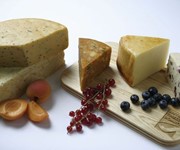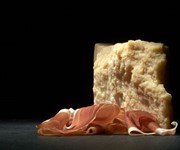Is our ‘traffic light’ food labelling really too simplistic?

Some EU countries are claiming that our ‘traffic light’ food labelling is unfair to their food.
The UK’s ‘traffic light’ food labelling system came under fire late last year when Italy criticised it on the grounds of providing misleading and “wrong health information” that might affect people's choices.
The European Commission has now weighed in on the matter, saying that the UK must comment on the complaints made against the labelling system within two months.
What’s the problem?
A group of Southern European countries, led by Italy, complained that, while the traffic light system aims to classify ‘healthy’ foods with its three-colour designations, it is too simple and might actually impart incorrect information.
The ratings don’t “take into account how different food products are combined in a healthy diet” stated the papers compiled by the Italian delegation in November 2013.
The effect of the traffic lights might, they continue, affect the free circulation of goods, and could also generate negative opinions of traditional food products that already bear marks of quality recognised by the EU.
Miguel Sagrado, spokesperson for the European Commission, said that “the concern that we have is that the system is likely to make the marketing of some products more difficult, and therefore hinder trade.” The “simplistic nature” of the traffic light system may cause “misconceptions” among the public, he continued.
The scheme is voluntary, but the European Consumer Organisation has actually already stated its “strong support” for the colour coding method and recommended a Europe-wide rollout.
Protecting health, or protecting exports?
 In a fairly recent article, I observed that Italy has 264 items registered with the EU to protect their provenance. I don’t think it would be too cynical to suggest that there is a certain level of interest in keeping up the export levels of foods like their traditional cheeses and hams, which have a high level of salt and fat.
In a fairly recent article, I observed that Italy has 264 items registered with the EU to protect their provenance. I don’t think it would be too cynical to suggest that there is a certain level of interest in keeping up the export levels of foods like their traditional cheeses and hams, which have a high level of salt and fat.
A basic labelling system like traffic lights allows people to quickly assess their shopping habits, picking a few ‘reds’, a few more ‘yellows’ and plenty of ‘greens’. Very, very few people will stop entirely eating ‘red’ food.
Does it really matter that a parmesan cheese has a red rating when I’m only going to grate a tiny amount on my spaghetti? Of course not, in fact a small amount of ‘red’ food is arguably needed in a balanced diet.
Giving the green light
 In all honesty, I think that the traffic light system is, and should be treated as, a useful and quick tool for guidance, and is one good way of helping to tackle our obesity issues.
In all honesty, I think that the traffic light system is, and should be treated as, a useful and quick tool for guidance, and is one good way of helping to tackle our obesity issues.
It also breaks down the components of a food, so people with specific dietary requirements, eg a low sodium diet, can choose accordingly.
Perhaps it needs some fine tuning, for which I think sensible suggestions would be welcomed. It is early days after all, but the labels are an important step towards clearer information on food packaging.
In 2008, the Faculty of Public Health predicted that almost nine in ten adults, and two-thirds of children, would be obese by 2050. I believe that we should place a much stronger impetus behind avoiding that outcome than protecting the interests of a few Member States worried about shrinking export markets.
Do you think our traffic light system is too simple? Is it necessary? Is it misleading? Let us know your thoughts in the Comments below.
You might also like:
Consistent food labels finally unveiled
Comments
Be the first to comment
Do you want to comment on this article? You need to be signed in for this feature